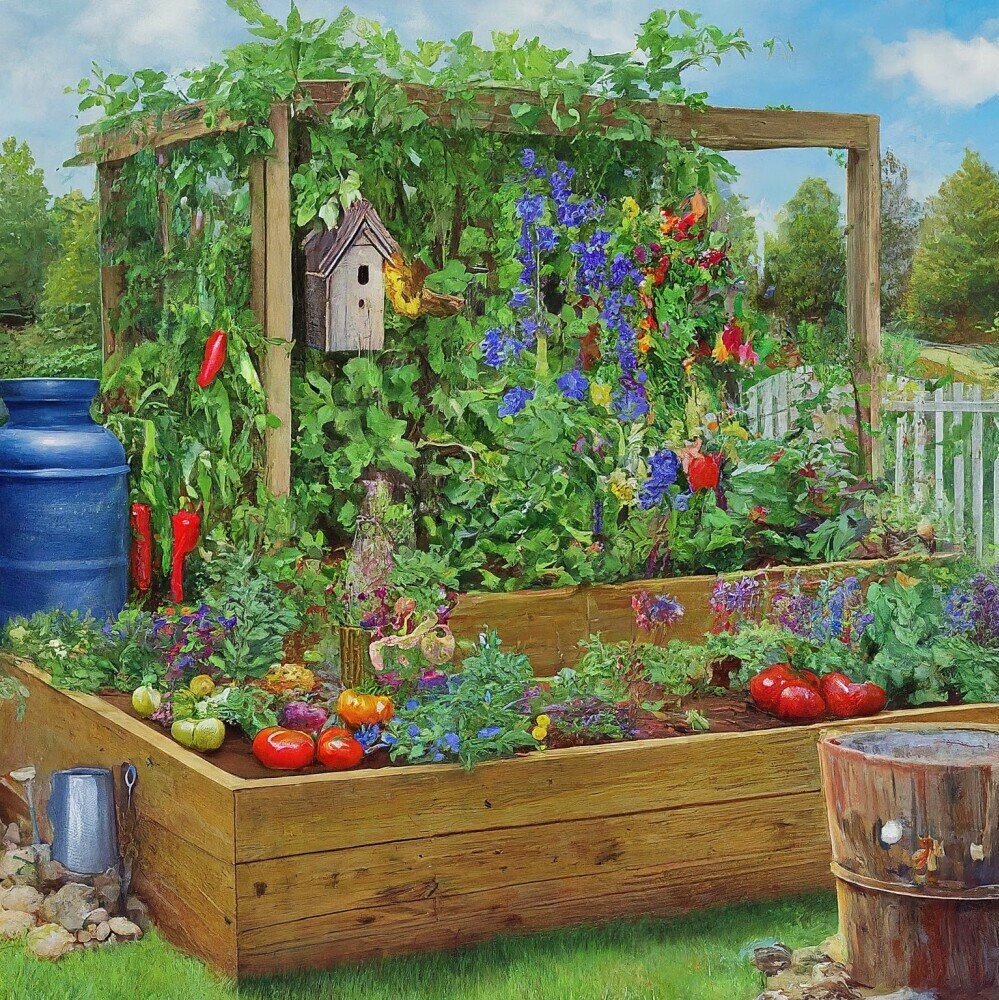 positively impact
positively impact
Have you ever wondered if your love for gardening could positively impact the environment? Guess what? It can. A sustainable garden goes beyond just being a plot of land with plants; it’s a harmonious ecosystem that thrives with minimal inputs and benefits nature and ourselves. In this opening section, I will explain the basics of sustainable gardening and why it’s a practice worth embracing.
Sustainable gardening uses methods that cause little to no harm to the earth while allowing us to enjoy lush, productive gardens. Think of it as a way to give back to the environment that gives to us. You’ll learn that this isn’t just about growing plants; it’s also about fostering biodiversity, conserving resources, and promoting the health of our planet.
Now, why should you even consider sustainable gardening? Well, it’s simple. This approach can reduce our carbon footprint, support local wildlife, and eliminate the need for chemical fertilizers and pesticides that can harm our health and the environment. It can also save you money in the long run and create a more resilient garden that is better equipped to handle whatever nature throws its way.
Now that you have a background in sustainable gardening’s myriad advantages, let’s dive into the next section. You’ll learn how to plan your sustainable garden, considering the specifics of your location, choosing the right plants, and understanding the key components that will make your garden both sustainable and delightful.
Planning Your Sustainable Garden
So, you’re eager to roll up your sleeves and dig into creating your sustainable garden. That’s a commendable ambition! But before you plant the first seed, some planning is crucial. It’ll include examining your available space, the specifics of your local climate, and the selection of the right seeds and supplies.
First off, assess your garden’s potential. Is it a sunny balcony, a sprawling backyard, or a modest window box? Understand the size, sunlight exposure, and any existing vegetation. The key here is not to underestimate the power of a small space; a well-planned garden, regardless of size, can flourish and contribute to sustainability.
When plotting out your garden, it’s vital to go beyond aesthetics. Choose native plants that thrive in your area, support local wildlife, and require less care and resources. Incorporating a range of plants encourages biodiversity, drawing a natural balance to your garden’s ecosystem.
Many overlook the local climate’s influence on gardening. The climate dictates plant selection and the timing of planting and harvesting. Connect with local gardening groups or use online resources to understand your region’s seasonal patterns better.
Finally, selecting organic and non-GMO seeds is a concrete step towards sustainability. This goes hand in hand with sourcing ethical gardening supplies, be it compost, mulch, or pots, ideally from local businesses that give back to the community. Don’t worry too much about perfection; focus on the progress and principles of sustainability in each choice.
Implementing Eco-Friendly Techniques
Let’s roll our sleeves and discuss implementing eco-friendly techniques in your garden. It’s not just about planting seeds; it’s also about nurturing your patch of earth in a way that respects and enhances the local environment. Sustainability isn’t a one-shot deal; it’s a series of deliberate choices that add to a significant positive impact.
Composting is your first port of call. Think of it as turning what some consider waste into garden gold. Every banana peel, coffee ground, and eggshell can be part of this transformation. Composting enriches the soil, reduces the need for chemical fertilizers, and minimizes landfill waste. You’ll find out that it’s incredibly satisfying to turn yesterday’s kitchen scraps into tomorrow’s garden nutrients.
Water is precious, and sustainable watering practices are non-negotiable. Whether setting up a drip irrigation system, harvesting rainwater in barrels, or timing your watering to reduce evaporation, you directly contribute to water conservation. You’re also making life easier for yourself – automated systems and well-timed watering sessions mean healthier plants and less work in the long run.
So, pests. They’re a challenge, but consider natural pest control before reaching for chemical solutions. Companion planting, for instance, pairs certain plants together for mutual benefit, like how marigolds repel garden pests while attracting pollinators. Biological pest control can also mean introducing beneficial predators like ladybugs. These sustainable methods can maintain the balance of your garden’s ecosystem.
Finally, let’s talk about the foundation of any garden: the soil. It needs attention if you want robust plants. Crop rotation and soil amendments such as bone meal or green manure help maintain soil health. And perennials? That’s the strategy I like to leverage. Plan part of your garden with plants that come back year after year to avoid the need for replanting and to ensure a resilient, flourishing garden.
With these techniques, you pave the way toward a thriving and sustainable garden and set the stage for what comes next: an ongoing process of care and community engagement.
Maintaining and Evolving Your Garden Sustainably
You’ve rolled up your sleeves and created the foundation for a sustainable garden – but your work doesn’t stop there. Sustaining your garden is an ongoing process that requires regular attention and adaptation. As each season brings challenges and opportunities, remember to tailor your care routine to accommodate these changes. This might mean mulching to protect your plants in winter or switching up your watering schedule during a summer heatwave.
Your sustainable garden is alive, and with that, it will evolve. Over time, your plants will grow, your soil will change, and your understanding of what works best for your space will deepen. Don’t hesitate to update your garden layout, introduce new species that might fare better, or expand thriving areas. It’s a learning experience that rewards patience and flexibility.
A sustainable garden isn’t just about the individual; it’s about the wider community and the shared value of environmental stewardship. Engage with local gardening groups, participate in seed exchanges, and consider donating surplus produce to food banks. Doing so can help spread the joy and benefits of sustainable gardening, creating a ripple effect in your community.
The world of sustainable gardening is dynamic and ever-expanding. To stay updated with the latest sustainable practices, tap into resources like gardening blogs, local workshops, or online communities. Embrace new ideas, technologies, and methods to enhance your garden’s sustainability. And don’t forget to document your process, as it can be a valuable resource for you and others in the future.
Lastly, consider your garden a wildlife sanctuary. Sustainable gardens often attract beneficial creatures, from pollinating bees to pest-controlling birds. You can create a thriving ecosystem that supports your plants and local biodiversity by planting various flowers, installing birdhouses, or leaving part of your garden a little wild.
Remember, your initial steps are merely the beginning of a rewarding journey. Embrace the ongoing process of nurturing your garden and watch as it becomes a sustainable oasis that flourishes year after year.
